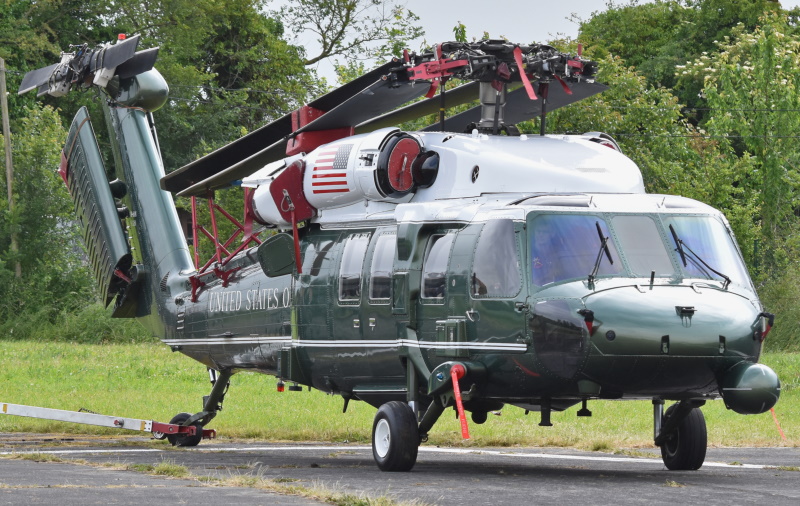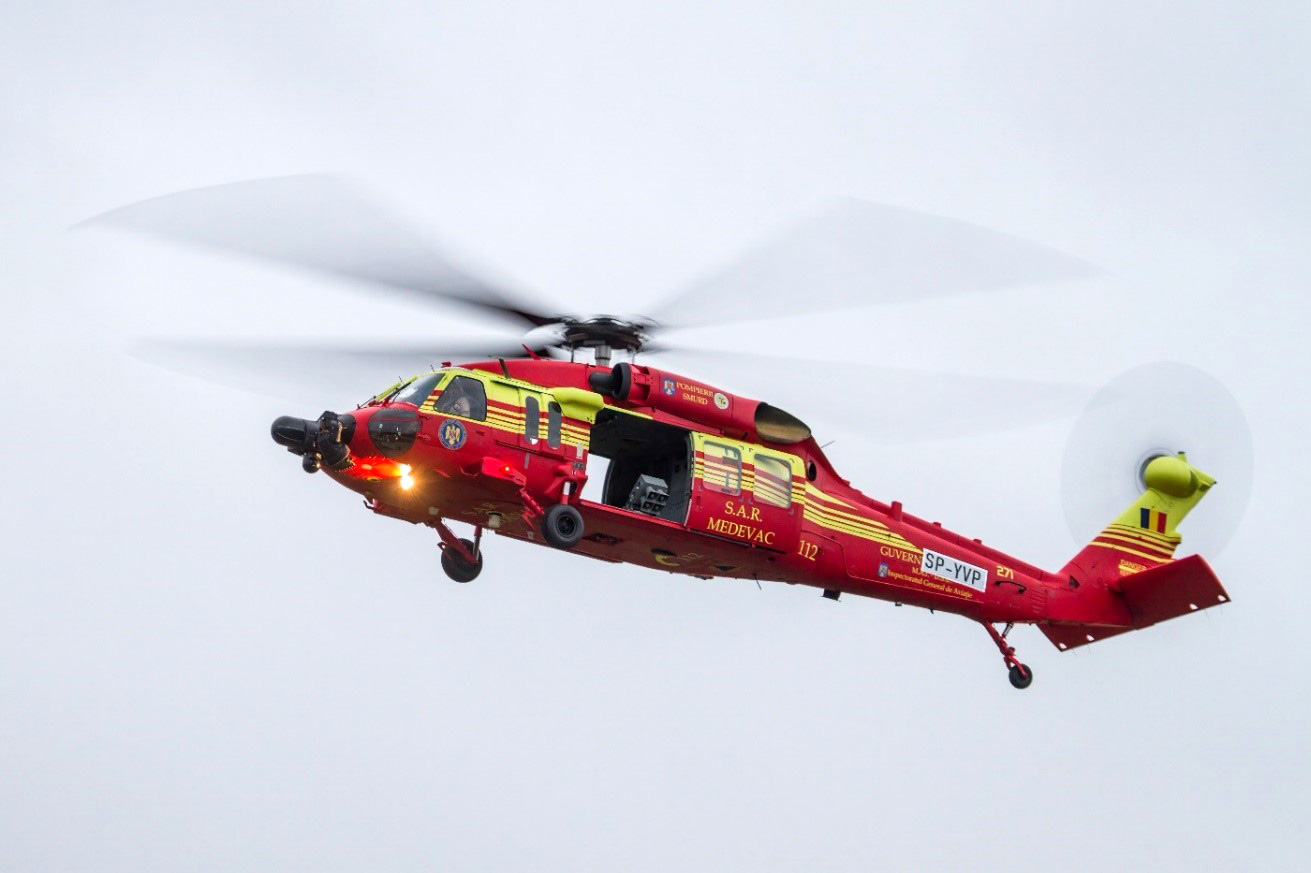The Sikorsky S 70 Helicopter: A Deep Dive into Its Design and Performance
The Sikorsky S 70 Helicopter: A Deep Dive into Its Design and Performance
Blog Article
Rotary-Wing Airplane Offering Superior Toughness and Precision Design
In the world of aeronautics, rotary-wing airplane have long been acknowledged for their distinct capabilities in various operational settings. As we discover the complex equilibrium between advancement and dependability in rotary-wing aircraft, it becomes noticeable that the merging of innovative innovation and tested design concepts has actually established a new standard for efficiency and effectiveness in the aerospace industry.
Evolution of Rotary-Wing Modern Technology
Throughout the background of aviation, the advancement of rotary-wing modern technology has been a testament to continual innovation and innovation in aerial engineering. From the very early days of vertical trip with fundamental styles to the innovative helicopters and various other rotary-wing aircraft these days, the progress in this area has been impressive.
In the very early 1900s, pioneers like Igor Sikorsky and Juan de la Cierva made substantial strides in rotary-wing technology. Sikorsky's VS-300 helicopter, initial flown in 1939, noted a zero hour in the development of practical rotary-wing aircraft. This success paved the way for additional innovations in upright flight capabilities.

Today, rotary-wing airplane play crucial functions in different fields, consisting of army operations, emergency medical services, law enforcement, and commercial transportation. The development of rotary-wing innovation proceeds to press the limits of what is possible in vertical flight, guaranteeing that these aircraft stay vital possessions in the air travel market.
Materials and Building Innovations
Demonstrating a combination of advanced materials and precise construction strategies, rotary-wing airplane have actually gone through considerable improvements in toughness and efficiency. Among the essential developments in materials made use of for rotary-wing airplane is the boosting usage of composite materials. These products, such as carbon fiber strengthened polymers, use a high strength-to-weight ratio, boosting both the architectural stability and general performance of the airplane. Furthermore, improvements in producing processes have actually enabled even more accurate and detailed construction of rotary-wing components, contributing to improved aerodynamics and performance.
Moreover, the integration of innovative coverings and surface area treatments has actually played an essential duty in enhancing the toughness of rotary-wing aircraft. These finishings give protection versus deterioration, abrasion, and extreme weather, prolonging the life-span of the airplane and decreasing upkeep needs.
In terms of building advancements, additive production, also understood as 3D printing, has actually revolutionized the production of complicated elements for rotary-wing airplane. This modern technology enables fast prototyping and personalization, leading to faster advancement cycles and lowered prices. Overall, the continuous development of materials and building methods is driving the capacities and efficiency of rotary-wing airplane to brand-new elevations.
Accuracy Trip Control Systems

The assimilation of GPS innovation further boosts the accuracy and integrity of these systems, enabling for specific navigating, waypoint monitoring, and automated flight control. sikorsky s 70. This degree of accuracy not just improves the safety and security of rotary-wing procedures however likewise improves general operational performance and mission performance
Furthermore, the continual improvements in artificial knowledge and artificial intelligence have assisted in the development of self-governing trip capacities within Precision Flight Control Equipment. This enables rotary-wing airplane to perform complicated goals with unrivaled precision and uniformity, making them important properties in a wide variety of applications, including military operations, search and rescue goals, and airborne photography.
Toughness in Testing Environments
Popular functional setups, rotary-wing airplane demonstrate extraordinary strength and robustness, guaranteeing ideal efficiency under tough ecological conditions. These aircraft are developed to stand up to a vast array of ecological factors, including extreme temperatures, high winds, and rough terrain, making them appropriate for different objectives in varied landscapes.
One crucial variable adding to the durability of rotary-wing aircraft is their rugged construction. These aircraft are built using top quality materials and advanced design strategies to boost their structural honesty and integrity. In addition, parts such as rotor blades, engine systems, and touchdown equipment are carefully developed to endure the strains and anxieties experienced throughout procedures in challenging atmospheres.
Furthermore, rotary-wing airplane are outfitted with innovative onboard systems that keep an eye on performance metrics in real-time, allowing for proactive upkeep and early detection of possible concerns - sikorsky s 70. This positive method aids stop unforeseen failures and makes certain the ongoing airworthiness of the aircraft in requiring functional settings. On the whole, the toughness of rotary-wing aircraft in challenging settings is a testament to their superior design and design, making them indispensable properties for various mission-critical procedures
Maintenance and Integrity Specifications
The adherence to stringent upkeep and reliability criteria is critical in ensuring the ideal efficiency and safety of rotary-wing airplane. Regular maintenance checks, performed by licensed technicians, are necessary to identify and attend click here to read to any prospective her explanation concerns before they endanger the aircraft's performance. These checks incorporate an extensive exam of all crucial parts, consisting of the engine, rotor system, avionics, and hydraulic systems, to ensure that they remain in prime functioning condition.
Additionally, adherence to set up maintenance intervals according to supplier guidelines is important for promoting the aircraft's reliability. This positive strategy helps avoid unforeseen failures and makes certain that the aircraft remains airworthy for its designated objectives. Furthermore, the implementation of robust dependability requirements, such as regular part screening and substitute based upon fixed lifecycles, further enhances the aircraft's reliability.
Final Thought

Finally, the improvements in rotary-wing airplane innovation have caused remarkable toughness and accuracy design. With ingenious materials and building techniques, along with precision trip control systems, these airplane can run in difficult atmospheres with boosted dependability. The maintenance and reliability criteria make certain that these rotary-wing airplane remain to carry out at their best, making them important assets for numerous markets.
Demonstrating a fusion of cutting-edge products and exact building techniques, rotary-wing airplane have undergone substantial improvements in sturdiness and performance. One of the vital advancements in materials used for rotary-wing airplane is the enhancing application of composite products.With careful focus to detail and progressed technical integration, rotary-wing airplane have welcomed Precision Trip Control Systems as a keystone of their operational quality. In general, the durability of rotary-wing aircraft in challenging atmospheres is a testament to their remarkable engineering go to website and style, making them indispensable properties for various mission-critical procedures.
In conclusion, the improvements in rotary-wing airplane technology have actually led to superior toughness and precision engineering.
Report this page